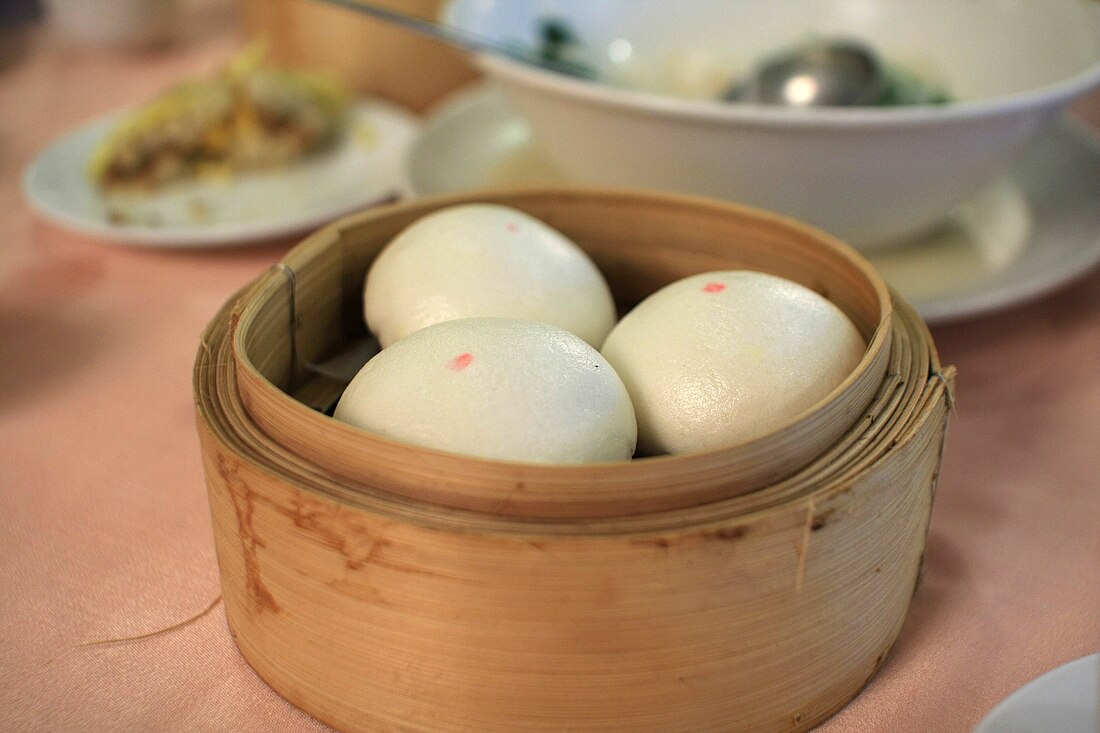Top Qs
Timeline
Chat
Perspective
Lotus seed bun
Chinese sweet bun From Wikipedia, the free encyclopedia
Remove ads
A lotus seed bun (Traditional Chinese: 蓮蓉包;Jyutping: lin⁴ jung⁴ baau¹; Cantonese Yale: lìhnyùhngbāau, pinyin: liánróngbāo) is a Chinese baozi filled with lotus seed paste. It is most commonly served as a form of dim sum.[1]
Remove ads
History
Lotus seed paste is a traditional Chinese cooking ingredient,[2] commonly used as a sweet pastry filling, such as in Lotus seed mooncakes.[3]
Lotus seed paste was used as a filling for sweet buns by Cantonese chefs, and rose to prominence sold as a form of dim sum.[4]
More recently lotus seed buns have become less popular, being sold at fewer dim sum restaurants, often being replaced by other buns with different fillings, such as cocktail buns.[5]

Remove ads
Variations
Longevity peaches, or 壽桃 (pinyin: shòu táo; Jyutping: sau⁶ tou⁴) are a form of lotus seed buns served to celebrate the birthdays of elderly people, symbolizing a good omen of longevity.[6]
Preparation
Lotus seed buns are prepared by steaming a yeast-leavened dough that contains lotus seed paste.[7] Depending on which variation of lotus seed bun is served it can take different shapes, but is traditionally made from the same dough as cha siu baau. When served as a longevity peach, the dough is twisted into a peach shape and given a pink dye to resemble a peach.[5]

See also
References
Wikiwand - on
Seamless Wikipedia browsing. On steroids.
Remove ads

